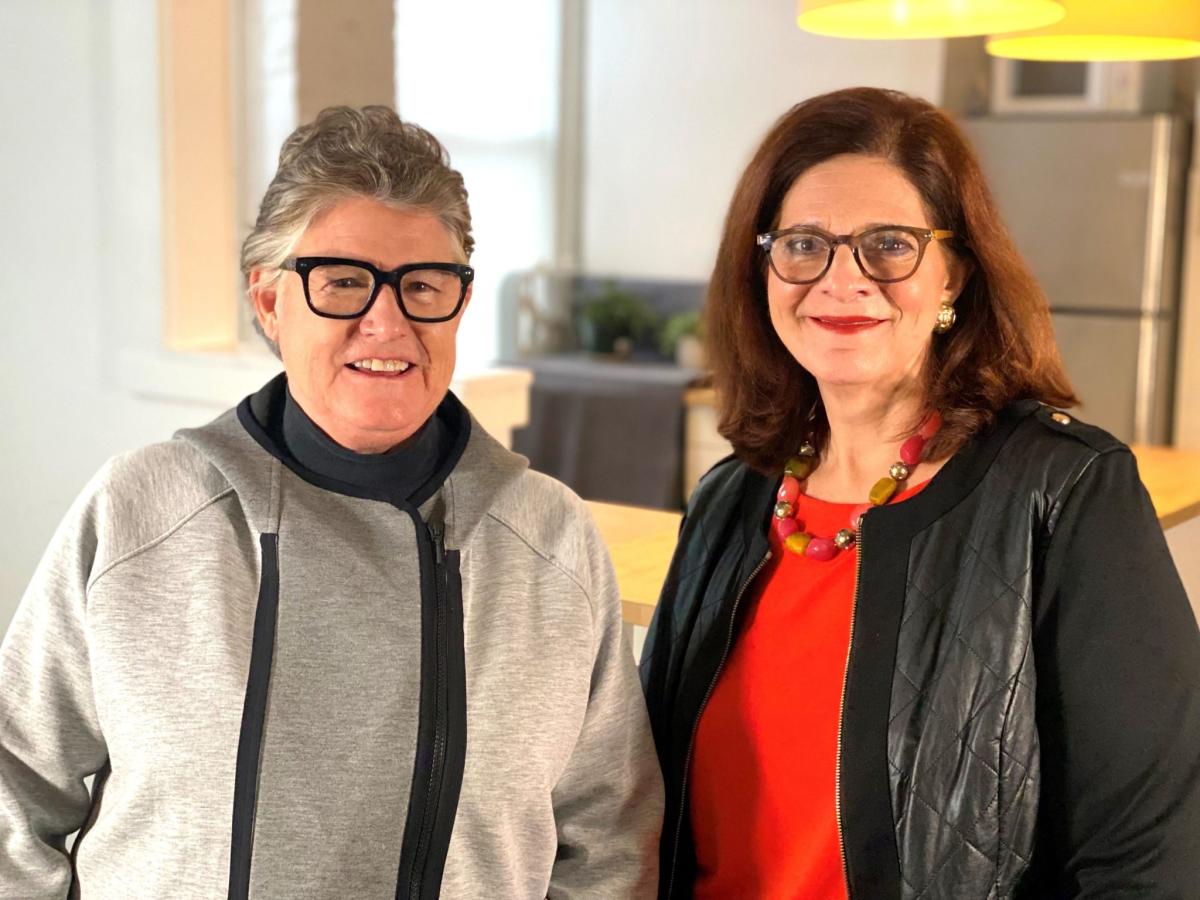After working at Fidelity Investments for 27 years, Nan Ives took the opportunity to take an early retirement package at the age of 59. She needed a break from the daily grind and felt she couldn’t pass up the “amazing gift” that was her business. offer her. She had fantasized about traveling, spending more weekends on Cape Cod and golfing to her heart’s content; she finally had the time and money to make it all a reality.
But the honeymoon period was soon over, says Ives, now 65 Fortune. Although she picked up a part-time job here and there, she soon felt a sense of loss and purposelessness that exceeded the joy she had experienced during her first few months on the links.
“I couldn’t wait to retire. I was tired. I didn’t want to do it anymore. But if you retire at 60, there are people who live to 90. That’s a third of your life. Because of what to do?” says Ives. “You don’t have to work, you don’t have to deal with all the things that are challenging about working, but it’s a third of your life that you don’t have a road map for.”
Coincidentally, a former colleague named Lisa Stornaielo, who had also taken early retirement, felt a similar dissatisfaction. After many conversations, the two decided that they didn’t want to retire so much as pursue a second act on their own terms: designing their own roadmap. Ultimately, they launched The Future of You, which helps other individuals and employers plan and manage the transition to retirement, which they hope to redefine.
Ives says, “60 is not old, 70 is not old. It’s a state of mind.”
Ives and Stornaielo, 62, are far from the only retirees who feel like they’re losing themselves and their purpose once they leave the workforce. In fact, almost a third of retirees suffer from depression due to the loss of routine, structure, social circle, and so on. A hard-stop retirement, like that of Ives and Stornaielo, is extremely difficult for many to endure.
But like a growing contingent of college-educated baby boomers, the women are not retiring and are opting to stay in the workforce rather than say they will be fully employed at 65. They are happier than before and enjoy helping others. Ives notes the satisfaction she felt building the company and learning everything from new research methods to working with contractors and video editing.
They now have what Mark Walton, a former journalist, calls the “unretirement” plan. Walton, who wrote the book Unretirees: How Highly Effective People Live Happily Ever After, explains that for anyone approaching retirement, but especially for those who have performed well in their careers, it is important to have not only a financial plan, but also a holistic life plan to avoid loneliness and boredom in this new phase of life help prevent. Although many think that they can easily fill their time with leisure activities, volunteer work, travel, visiting family and the like, this often turns out not to be the case.
“I’ve never quite understood how to go from an exciting (and we think important) career to something less than that,” says Walton. Fortune.
Since the 1980s, the number of employees aged 65 and over has quadrupled. This is due to numerous factors, and many people obviously work out of financial necessity; The pension crisis is very real. (That said, many older Americans who would prefer to work may not be physically able to.) But researchers have noted that baby boomers who worked white-collar jobs and see no need to slow down make up a much larger share of the population. that workforce than ever before. In fact, graduates who have obtained a university degree are more likely to continue working than people over 65 than people without a diploma.
People are living longer, and thanks to advances in technology, many are working in less physically demanding jobs. For America’s first generation of knowledge workers, once society decides they must leave the workforce, it’s impossible for many to simply flip the switch, says Walton, who knows firsthand what it means to reach retirement age and beyond have much more to give. Enter the retirement plan.
Drawing up a pension plan
A pension plan does not always have to mean that corporate America will continue to grind. Walton says there are three key building blocks: fascination, flow and generativity, all of which can be achieved on one’s own terms.
First: fascination. What are you really interested in? What are you good at? What do you like to do?
“The most important thing is that people not only love their work, but are fascinated,” says Walton. “It may not be the same work they started with. There are people in the same fields, [and] There are people who have reinvented themselves.”
Fascination is critical because it leads to the second block: flow, says Walton, or losing yourself in the work. During flow states, time disappears and you can fully immerse yourself in your work. What leads to flow depends on each person. It is “activated by any form of purposeful work in which we fully invest our talents, skills and energies,” Walton writes. Keeping the mind busy, he says, is crucial to many people’s happiness.
“This is why taking on challenges that expand our minds and capabilities, rather than pursuing less demanding activities, is such an important building block of a successful retirement plan,” he writes.
Generativity comes from flow. The latter term refers to the human impulse to “pay it forward” or help others, and is important for many people in the second chapter of their lives, Walton writes. Often the feeling that you are contributing to society is necessary to avoid ‘personal stagnation and emotional despair’.
“If you don’t do that, you don’t complete yourself as a person,” says Walton.
A pension revolution
Walton points out that many people simply don’t talk about the lack of purpose they feel in retirement out of shame or embarrassment. Stornaielo and Ives help solve this. They offer people a ‘safe space’ to ask more and find their fascinations, many of which may not seem obvious at first glance, but make perfect sense.
For example, one client enjoyed exercising; she considered becoming a personal trainer. But Stornaielo and Ives noticed she was “lightening up” as they discussed how she could help her son and friends with their LinkedIn profiles. Now she consults with recent graduates and helps them launch their careers.
“You don’t have to work anymore, but there’s the honesty of, ‘This is harder than I thought.’ It can be difficult to have an empty agenda when you normally have a full agenda,” says Ives. “I play a lot of golf, but is that the reason I jump out of bed every morning? We want people to find something new and exciting that will make them happy.”
Once they generate these ideas, they help create plans with clients, knowing that – like any other plan in life – these can change over time. Retirement is not a stagnant situation. Like a financial plan, it sometimes needs to be rebalanced, Ives says.
So far, the partners have offered their program to companies of varying sizes, from a bank to a nonprofit and academia. They hope it will become a new benefit embraced by more organizations, the downside of onboarding new employees. It can make older workers feel valued and respected by their employers, rather than being forcibly dismissed, Stornaielo says.
Better yet for the two women, because they are entrepreneurs, they set their own hours and take on as much work as they want, rather than answering to the management of a company in which they have no real stake.
“At this point in my life, I don’t need a nine-to-five grind,” Stornaielo says. But “we are not our grandparents’ vision of retirees. There is a revolution underway about what retirement could look like.”
Ives and Stornaielo have developed the ideal pension plan. They do something they enjoy that also challenges their minds and helps them develop new skills. At the same time, it fulfills their generativity needs.
“I’m not giving up golf. But we have a balance in our lives that is really fulfilling,” Ives says. “It doesn’t feel like work. It’s fun and we’re helping people. There’s an inherent purpose to it.”
What is your pension budget? Fortune writes about what Americans at different income levels spend in retirement. To share your story, email senior writer Alicia Adamczyk at alicia.adamczyk@fortune.com.
This story originally appeared on Fortune.com





